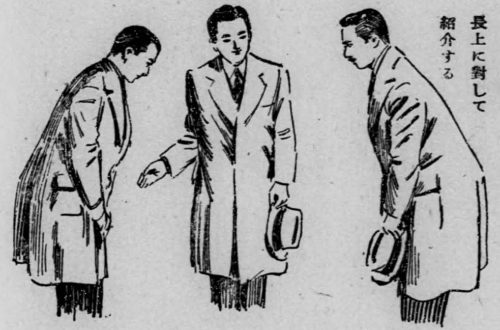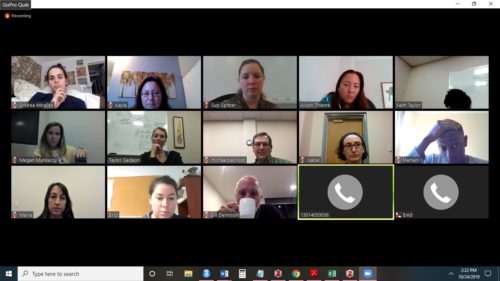Look at this stuff, isn’t it neat?
Kayle Krieg ·By: Kayle Krieg
In the Disney animated movie, “The Little Mermaid,” adapted from Hans Christian Andersen's original story,1 there is a scene in which Ariel sits down to dinner with Prince Eric and Grimsby. She is very excited to see a fork at the table and begins brushing her hair enthusiastically. Thanks to some misinformation received from Scuttle (the seagull), she believes that this “dinglehopper” is intended for grooming, not eating. In fact, moving from the underwater world to the above-water world proved to be a rough transition for the young girl. Ariel's story makes me think about my own everyday actions and motions that I go through, without even realizing it.

For instance, what do you do when you enter a room? How do you greet a friend? Do you give them a hug or a kiss? What about greeting an acquaintance, or acknowledging a stranger? Depending on where you live, or where you were raised, the answers to these questions may be different. These little nuanced behaviors are often not even an afterthought— we do them automatically. The way we act in these everyday situations is a reflection of the tacit, taken-for-granted, implicit knowledge that gets us through each day. While it is customary in the United States to greet another person with a handshake, in other parts of the world a kiss or bow is more socially acceptable. Finding yourself in a place where you do not know the customs could cause some discomfort and embarrassment.

As we do every Thursday afternoon, the Environment and Society class met on Zoom to discuss our weekly theme. This week’s topic: Cultural Models and Cultural Consensus Analysis. First we needed to establish how we are defining and approaching culture in these methods. Dr Paolisso stated that culture is “systems of knowledge and values,” and although there is some variability in these systems, there is a core system that is shared by members of the same group.
First we have to consider how brains work in storing and using the information it receives. The brain needs to be able to hold all of the information it receives and needs, and keep it organized, so knowledge is kept in schemas, or templates. Dr. Paolisso explained that schemas are mental representations of how we organize knowledge, and how we use this knowledge to interact within our communities.2 Asking the class for examples of schemas in our own life elicited responses from several classmates. One such response was from a classmate that recently visited China, and some of the tacit knowledge of how to behave while eating was much different than her Puerto Rican upbringing.

In class we discussed cultural models using an example of watermen on the Eastern Shore of Maryland. Dr. Paolisso's research with this community involved speaking to watermen and understanding their environmental knowledge of crabs and the Chesapeake Bay. Watermen are now considered to be the traditional knowledge holders of the Chesapeake Bay and the fisheries wherein, since the near extinction of an estimated 20,000 native fishermen, farmers, and hunters from the Delmarva peninsula in the early 1600’s. Through interviews, conversations, and a lot of work, Dr. Paolisso uncovered a cultural model that centered on the tacit knowledge that “God provides crabs”.3 This central tenet is intertwined in the watermen’s approach to daily life.

Another example is from Katherine Hayhoe in this clip from Full Frontal with Samantha Bee (skip to 3:02 for Dr. Hayhoe’s part of the segment), about framing climate change as a part of God’s intent to have humans be stewards of the Earth. The change in attitude of some Christian “climate deniers” is immediate when the conversation is framed from their point of view. Understanding cultural models can be a good tool for situations which require multiple groups to work towards a common goal.
The second method we looked at was cultural consensus analysis. This quantitative approach is a factor analysis of people. Throughout natural discourse or semi-structured interviews, schemas begin to take form, and can be studied by researchers. To use cultural consensus analysis, a questionnaire with items offering a range of answers (such as 1 = strongly disagree, 6 = strongly agree) is created.4 These numbers can be used to determine the extent to which cultural knowledge is shared among different groups. Using cultural consensus analysis, Dr. Paolisso demonstrated the degree to which different groups such as environmentalists, scientists, and watermen agree with statements such as “Should a non-native oyster be introduced to the Chesapeake Bay?”. Six stakeholder groups were questions about their thoughts on oyster restoration. Patterns in the responses indicate reveal levels of knowledge of the cultural system as well as variability within and between certain groups.
In class, many of the students' questions about this method were about how the questionnaires are constructed. Even though the end product of the analysis is a number, there are still qualitative concepts to consider. Both of these methods seem to work very well as part of a metaphorical toolbox for understanding culture and how it interacts with the environment. Gaining an understanding of a culture using cultural models can serve as the basis for writing the questions needed for a culture consensus analysis. Schemas are converted to Eigenvalues... basically, there is a little something for everyone.
References:
1. Andersen, H. C. “The Little Mermaid”. Published by C. A. Reitzel 1837.
2. Paolisso, M. 2015. "Chapter 4: Understanding culture and environment dynamics using cultural consensus analysis" In Handbook of Research methods and Applications in Environmental Studies.
3. Paolisso, M. 2002. Blue Crabs and Controversy on the Chesapeake Bay: A Cultural Model for Understanding Watermen’s Reasoning about Blue Crab Management. Human Organization 61: 226-239.
4. Paolisso, M, and N. Dery. 2010. A Cultural model assessment of Oyster Restoration Alternatives for the Chesapeake Bay. Human Organization. 69:169-179.
Next Post > Re-envisioning Coastal Sustainability through Future Earth Coasts
Comments
-
HAMANI WILSON 6 years ago
Cultural Consensus and cultural models have challenged our thought process and analytical methods when performing scientific research. You framed this impact well in your blog. little mermaid reference was cool.
-
Alison Thieme 6 years ago
Enjoyed the clip, its neat to see these important issues being covered in popular media.
-
Andrea Miralles 6 years ago
Really interesting clip, I think this is what cultural models are really useful in. Not necessarily changing someones mind but reframing the things you understand and seeing how someone else came to form their own schemas.
Good job!
-
Taylor Gedeon 6 years ago
Class discussion made me very curious about the construction of questionnaires and the innate bias of question structure. Great blog!
-
Isabel Sullivan 6 years ago
The Little Mermaid was a great way to start the blog! Definitely put the watermen's point of view into perspective! I also liked that you included our discussion on how people greet one another. Great job!
-
Megan M 6 years ago
The Little Mermaid, Katherine Hayhoe, better understanding watermen communities. Could a girl ask for anything more from a blog post?! A great way to re-explain schemas
-
Enid Munoz 6 years ago
"Look at this blog, isn't it neat?" Yes, it is. I found the discussion on the watermen's perspectives fascinating. They are guided by their faith.
PS: Please give the class a heads up when taking a picture. ;)
-
Michael 6 years ago
Very good and accurate summary of cultural models and consensus. Enjoyed reading it
-
Amanda Rockler 6 years ago
Love the Little Mermaid, love Samantha Bee. Thanks for an entertaining read!

